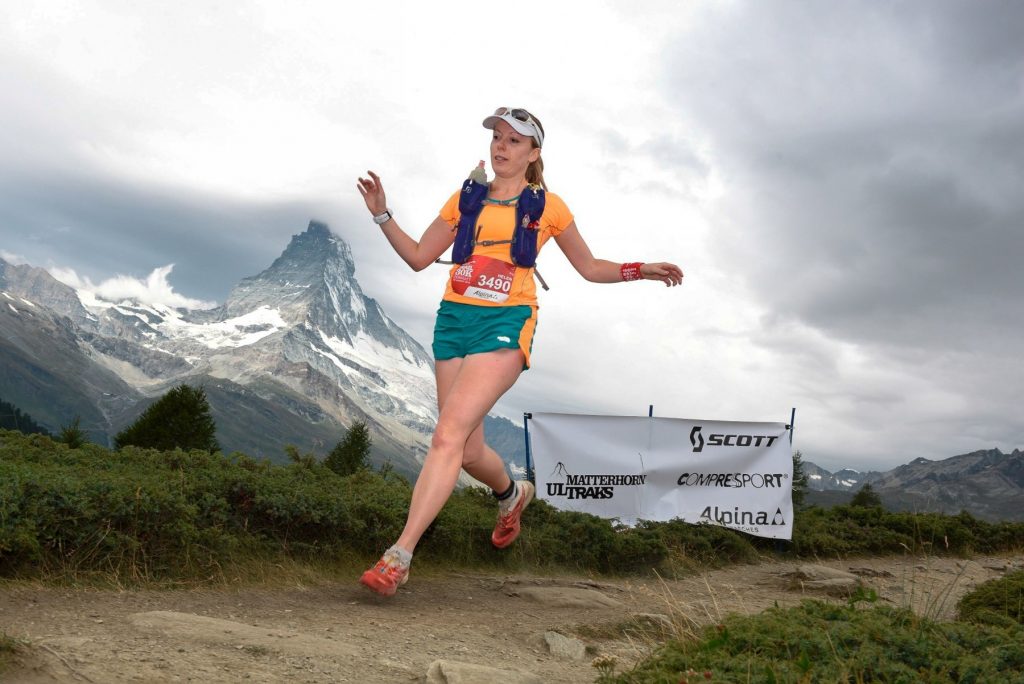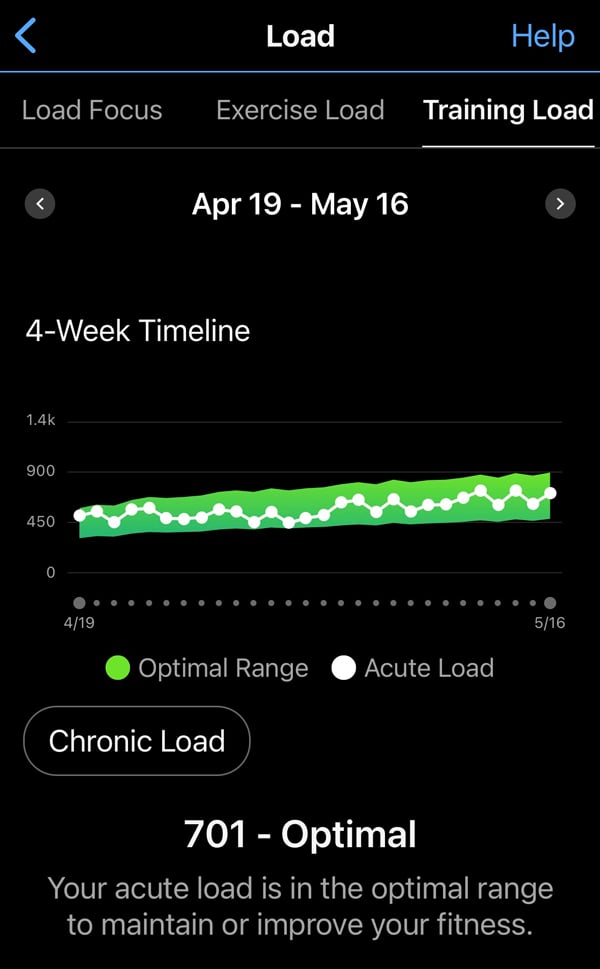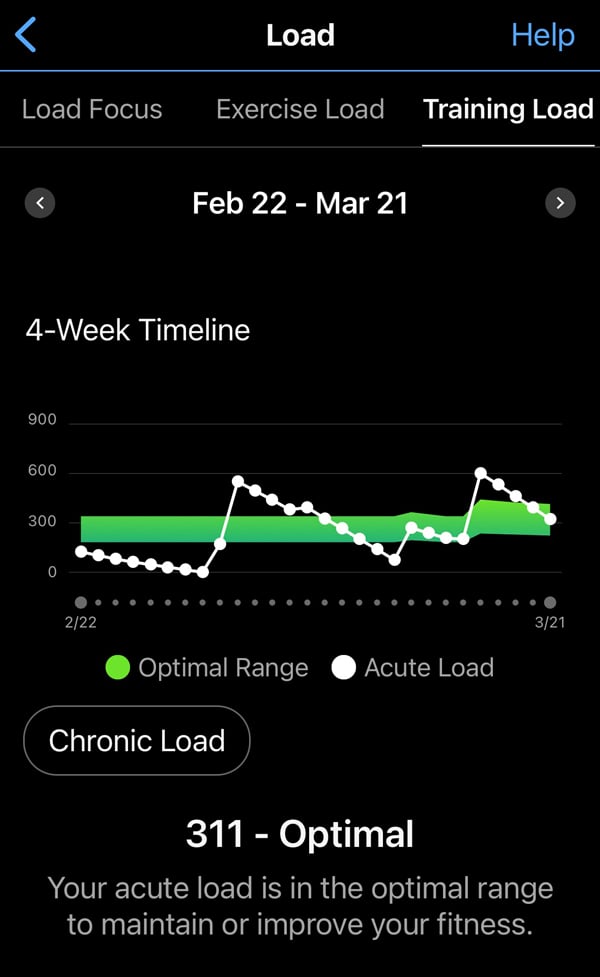Overtraining syndrome is something that every runner (or athlete, for that matter) should be aware of, no matter your level of fitness, running experience or speed.
As an endurance runner I’ve had my share of exercise-related fatigue, injuries and burnout. As with any healthy relationship in life, our relationship with running, our run training, race frequency and intensity of our runs and other workouts should provide a healthy balance between training, challenging workouts, gains, rest and recovery.
If you go too hard, too much, or for too long a period of time, then there may come a time where you’ve pushed yourself to a point where you need to pay attention to your body’s need for additional care and recovery.
In this post, I explain what overtraining is, how to know if you’re experiencing running-related burnout (also referred to as ‘non-functional’ overreaching), the common signs and symptoms to look out for, and share tips and suggestions to help rest and recover so you can get your life and training back on track.
What is overtraining?
Overtraining syndrome is characterized by Kreher and Schwartz in a 2012 publication in the American Orthopaedic Society for Sports Medicine as appearing to be ‘a maladapted response to excessive exercise without adequate rest, resulting in perturbations of multiple body systems (neurologic, endocrinologic, immunologic) coupled with mood changes.”
Put simply, if you’re constantly increasing your training loads (such as run frequency, length or intensity) and overreaching over longer periods of time without enough adequate rest and recovery, you may develop overtraining syndrome.
It’s basically a continuum. You obviously need to push your limits and train hard at times to benefit from training and performance adaptations.
However, if you over-reach in your training for too long, it starts to have a negative impact on you as you need more time to recovery and rest… and if you don’t bring it all back into balance then you may end up moving from simply ‘overreaching’ in your training to suffering from ‘overtraining syndrome’.

It’s important to note is that overtraining syndrome is a real condition, not a myth. It’s not unusual among endurance athletes such as elite runners, and can be clinically diagnosed.
That being said, many runners may use the term ‘overtraining’ to simply articulate that they’ve been overdoing it in their training loads, without suggesting they’re suffering from this recognized condition – they’re simply athletes who are aware of the effect too much training and not enough recovery time is having on them.
If you suspect you’re on the path to overtraining, then it would be smart to back off on your training load and consider seeing a professional who can help assess your symptoms – this is equally important in case it turns out that in fact you are experiencing another issue or condition that requires different treatment.
Possible signs of overtraining
While some tiredness and muscle soreness is to be expected after intensive training such as hill repeats, sprint intervals, long runs or races, it pays to be mindful and aware of your overall body and mood to assess whether you’re truly allowing yourself enough of a balanced training load and recovery period between workouts.
For runners and other endurance athletes, here are some signs to look out for in yourself as well as your training partner(s) that could indicate you’ve been overdoing it:
- Persistent fatigue
- Lack of motivation to run
- Unexplained underperformance in your training (including possible reduction in your VO2 max)
- Feeling low or unusual mood swings
- Prolonged heavy, sore and stiff body (especially your legs)
- Recurring running overuse injuries such as shin splints, Achilles tendinitis and plantar fasciitis
- Restless sleep
- An elevated resting heart rate
- A higher than expected heart rate while training – which moves you into higher heart rate training zones quicker than expected)
- Lower heart rate variability (HRV)
As you can tell from the list above, many of these could also be signs of other health conditions so getting an expert to help assess your condition and run any necessary tests such as blood tests and nutritional assessments is important.
How to recover after an intensive run or race
Recovery doesn’t just mean ‘not running’.
Here’s how to recover from a tough run or race, to help your body heal, repair and grow stronger so you can attain the most benefit from your training efforts:
- As a general rule, stick to eating whole, nutritionally beneficial foods packed with antioxidants and anti-inflammatories, and consider nutritional supplements as appropriate
- Be sure to warm up and cool down every time you run.
- Take the time to stretch and massage between runs, this will help flush lactic acid out of your muscles and helps with overall flexibility and recovery. Here are my go-to pre and post-run stretches
- Get plenty of good quality sleep – some of these non-medicinal sleep products may help
- Drink plenty of water before, during and after
- Consider a premium recovery protein shake after particularly long or intensive runs or workouts
- If you have an active recovery workout, such as a short recovery run, planned, make sure you take it easy and don’t run harder than necessary.
Is overtraining a myth?
It’s not a myth, it’s a recognized condition, albeit mostly seen with elite endurance athletes.
However, it’s worth noting that overtraining exists at the end of a spectrum of burnout and can take a long time (as in, many months) to recover from.
So, given that overtraining is the full-blown ‘syndrome’ that you can end up with if you continue to intensively train and overreach for prolonged period of times without backing off or paying enough attention to getting adequate recovery, many people should recognize they’re on the path to overtraining without it ever becoming as severe.
Ideally you recognize much earlier that you’re feeling burnt out or need a break from training for your mental or physical wellbeing.
I know I’ve felt like that after a particularly hard training block and challenging race (a gnarly mountain marathon at high elevation springs to mind) and needed to allow enough time for some self-care, great nutrition and plenty of rest before resuming a new training block.

How to avoid running burnout
There are several tried and tested things you can do to ensure your running training is sufficiently challenging and enjoyable without pushing you down the path to burnout or even overtraining proper.
Train appropriately
Follow an appropriate training plan that incorporates adequate rest days, periodization and tapering. If you’re looking for a new training plan to follow, check out our free 5k, 10k, half marathon and ultramarathon training plans.
Ensure your training runs and races always include warm up and cool downs, with stretching.
Avoid training when you’re unwell. Your immune system is already fighting something, so now’s not the time to be pushing your limits in pursuit of training gains.
It’s also wise to modify your training if you’re going to be in extreme environments such as excessive heat and humidity and altitude.
Fuel your runs and recovery
Ensure you’re fueling your runs with adequate calories before, during and after.
What you eat has a huge influence on how efficiently you’re supplying your body with nutrients and calories for your training, as well as how well and quickly you recover from training adaptations and associated inflammation.
Don’t forget to hydrate – again, before, during as well as after your runs – and not just when it’s hot outside.
Drinking plenty of water will help with many of your body’s processes and that includes flushing out toxins and controlling inflammation, and you should also consider replenishing your electrolyte levels for longer, harder and more challenging runs, which is most easily done by mixing an appropriate electrolyte sports drink powder into your water.
Our nutrition section is packed with tips and information on sports nutrition and superfoods to incorporate into your diet.
Get plenty of sleep
We do most of our healing and recovery while we’re asleep, so it goes without saying that getting enough, good quality sleep, can make a huge difference to how efficiently you recover from intensive workouts and training blocks.
Use a running watch or fitness tracker to monitor your vitals
Whether it’s an Apple Watch, Garmin, COROS, Polar or Suunto running watch, many quality smartwatches will monitor key health metrics as well as your running stats, including heart rate, resting heart rate, breathing rate and heart rate variability.
These watches also provide other metrics and indicators such as your training recovery status, acute load, load ratio, training readiness and stress or strain scores, as well as training recommendations.
It’s fantastic how many personalized insights you can get from wearing one of these smartwatches, and I’ve found the recovery scores and training readiness to be extremely useful tools in supporting my gut instincts when it comes to determining how frequently or hard I should be training that day.
As an example, with most Garmin running watches (such as Fenix 7 series and Forerunner 965), their software helps you track your training recovery, acute load, load ratio (load relative to past loads) and readiness for future training, so you can adjust your training plans if it’s indicating you need more recovery time or should do less intensive workouts.
Here’s an example from the Garmin Connect app (that syncs with the running watches) showing what a good 4-week training load looks like.
The athlete is staying in the optimal training load range, which is steadily increasing over the four weeks as a result of them following an appropriate training plan with challenging workouts and sufficient recovery times:

Then, compare this to a training period where the watch wearer was not following a training plan to support a steady and manageable increase in acute training load.
As you can see, the workouts often fall outside of the load range, either too easy or too hard, and the overall green load range doesn’t increase much over the 4-week timeline:

To learn more about running watches, visit our guide to the best running watches, which includes reviews of the latest running watches that we rate the highest right now.
How to recover from training burnout and overreaching
As mentioned above, my number one tip is to consult a professional who can help rule out other conditions.
If you’re suffering from running-related burnout and feel like you’re on that path resulting from long-term ‘non-functional’ overreaching then try these tips to reset and help yourself recover.
Take a break
Take a 10-14 day break from running. You don’t have to do no exercise, but stick to more mellow activities such as gentle hikes, swimming and yoga.
Prioritize recovery
Increase the amount of time you dedicate to sleep and recovery.
Try and get an earlier night and consider what you can do to create an environment in your bedroom that’s more conducive to a good night’s sleep.
Give your body some TLC
Get a professional massage or treat yourself to a percussion massager and some CBD recovery balm to help soothe aching and tired parts of your body.
Boost your diet by treating yourself to plenty of fresh, fruit, vegetables, nuts and other wholesome whole foods. Also consider nutritional supplements such as green powder drinks like Athletic Greens and daily capsules such as Fatty15.
Reduce your training load
Reduce the volume and frequency of training when you resume.
Once you’ve had a break from training and recouped with plenty of rest and good nutrition, start a fresh new training plan so you can build up your training load gradually.






